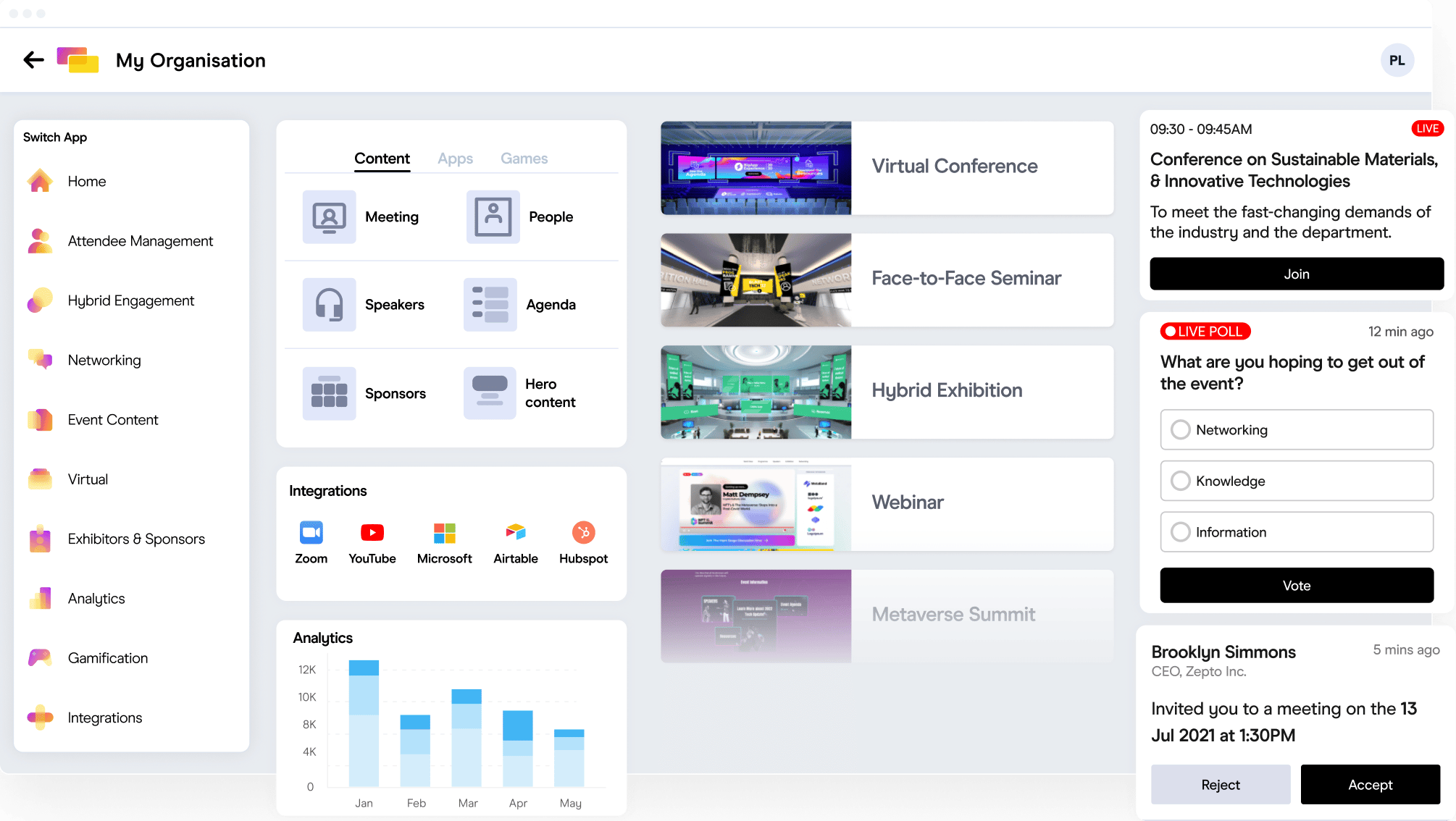Every event operator eventually hits the same wall: you know the event actually performed… but proving that impact in a way no one can argue back is painfully inefficient. The moment the event ends, you suddenly enter a messy phase of reconciliation. Multiple exports, stitched reports, static slides, and subjective interpretation. It becomes a full time job just to translate reality into something defensible.
ROI should not require a reconciliation hangover.
This is exactly where AI dashboards fundamentally shift the workflow. The dashboards are not built at the end. They are built while the event is happening. And here’s the real unlock: you no longer need analysts, BI specialists, or developers to stitch formulas and models together just to prove value. ROI stops being a slow external dependency exercise. It becomes a live feedback loop that actively improves what you do during the event rather than a late justification exercise.
Inside Coplanner, you do not manually construct dashboards or formulas. You describe the visual you need in natural language, and the dashboard is generated directly mapped to your event data. Real time. Decision ready. And structured in a way leadership actually respects.
This is what makes AI ROI proof actually usable and operational in events… not theoretical marketing AI.
Step 1: Define ROI that matters
ROI starts with clarity – not volume.
Pick the few metrics that actually influence budget, business decisions, and investment decisions.
Examples:
- Registration conversion percent – Shows if your registration funnel actually works. Helps you justify where drop-off friction costs you revenue.
- Cost per qualified attendee – Shows ROI efficiency beyond vanity attendee volume. Helps finance and leadership understand actual value per meaningful attendee.
- Pipeline per sponsor tier – Shows if sponsors are priced correctly relative to commercial outcome. Helps you calibrate tier pricing for next cycle.
- Session attendance lift vs programming intent – Shows whether programming strategy is actually influencing the right persona behavior. Helps you adjust agenda formats in real time.
- Win rate of leads sourced at event vs non event sourced pipeline – Shows events’ real commercial impact compared to other channels. Helps you defend budget with empirical revenue proof.
Leadership cares about these because they represent business outcomes – not event mythology.
Step 2: Tell Coplanner what to visualise – in words
Inside Coplanner you write:
Show me ticket revenue vs actual attendance vs no show rate by ticket type.
Show this daily across event days.
Coplanner builds the dashboard – cards generated, measures mapped, aggregated correctly against the right event data sources.
No formulas / BI / analyst dependency.
Step 3: Build once. Use it forever.
ROI logic becomes reusable.
In Coplanner you can clone dashboards across events – quarter over quarter comparisons, region comparisons, same event year on year, audience segment comparisons.
This is where event work becomes a channel model, not a one-off campaign.
Step 4: Report while the event is live – not 3 weeks later
Real ROI power is not what you tell after.
It is what you can adjust during.
If a session is driving C-level conversion but the following block is mid funnel heavy – you can shift formats or sequencing tomorrow.
Live ROI reporting enables live intervention.
That is the difference between events that create real business outcomes vs events that end as recap decks.
Step 5: Present defensible ROI with confidence
After the event, your ROI narrative is not a stitched deck.
It is already built.
- which sessions drove real pipeline
- which sponsors earned real return
- which audience segment yielded highest commercial value
- which formats must be doubled down next quarter
Every chart can be inspected back to the raw Gevme data source – so conversations are no longer opinion debates.
The data is verifiable directly in platform.
Why this matters now
Budgets are not keeping pace with expectation anymore. Every team is being asked to justify more, faster, with less emotional narrative and more economic gravity. And the events that continue to win in the next cycle are the ones that can prove that gravity repeatedly, not once in a post-mortem slide.
Event-native AI dashboards are how event teams actually get that leverage. They move ROI from a reporting ritual into a strategic loop. Not reporting to explain the past… reporting that actively instructs the next decision, the next programming move, the next investment.
This is the real shift. ROI is not a wrap-up narrative. ROI is becoming a live operating system for event performance itself.
And this is why Coplanner is different
Coplanner is not generic AI layered on top.
Coplanner sits inside Gevme modules – registration, ticketing, attendance, payments, engagement – so the dashboard generation is context-aware, structured, and grounded in the data that actually runs the event.
AI is not bolted on externally.
It is inside the workflow – helping planners prove value while the event is still unfolding.
Event ROI – automated, live, and decision ready.



